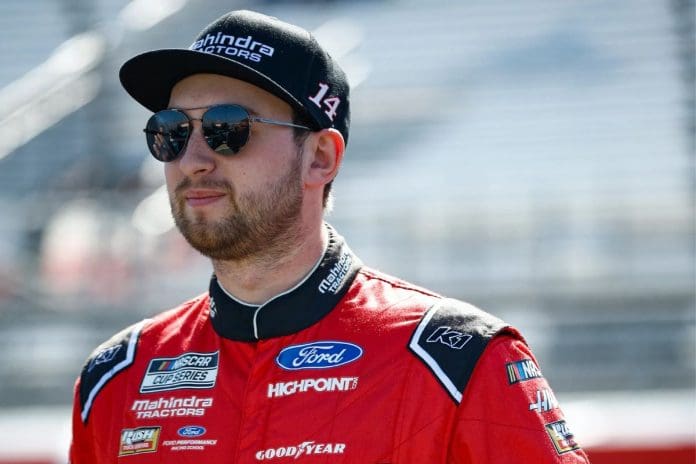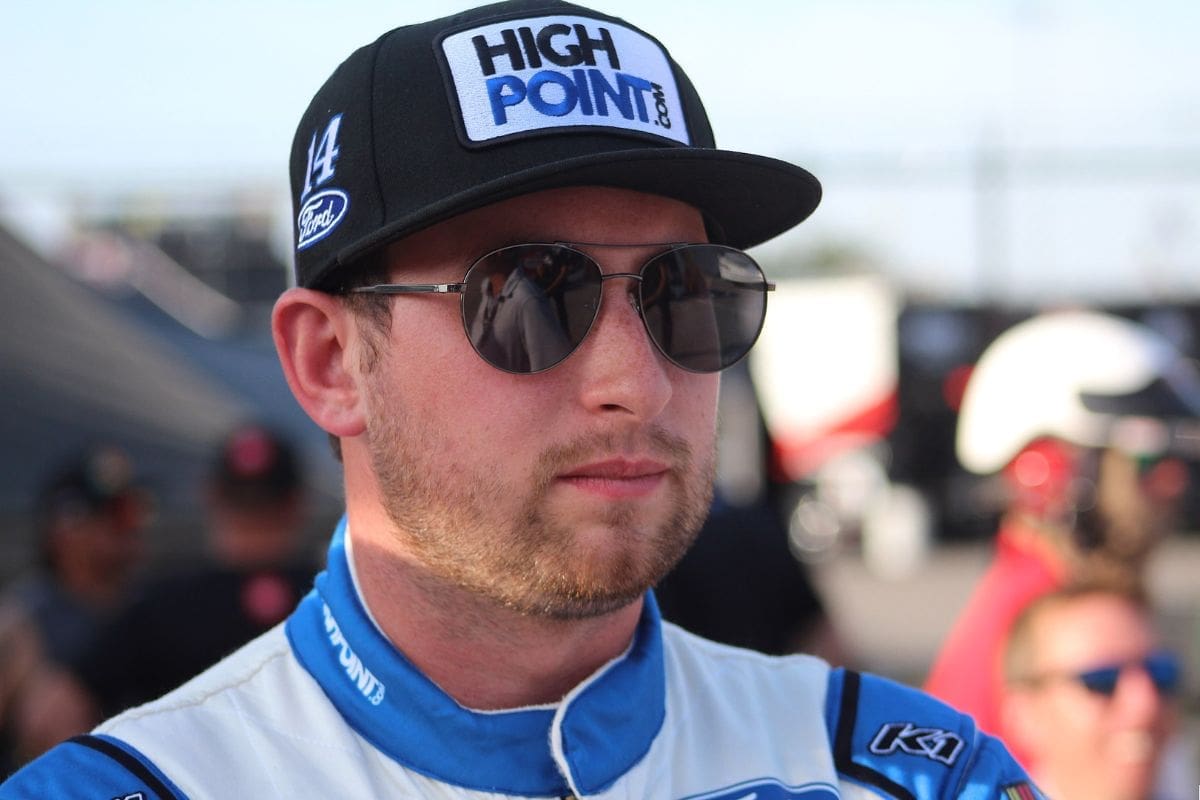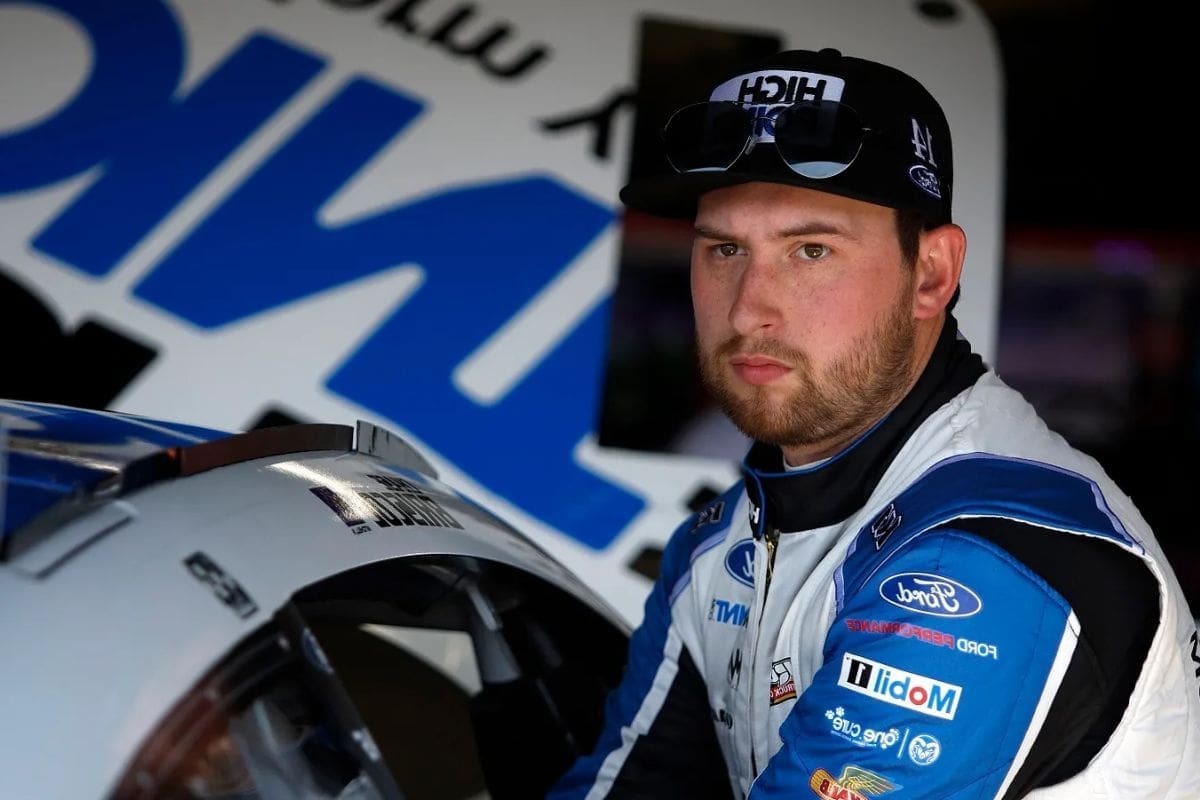Chase Briscoe’s Martinsville Meltdown: Chase Briscoe’s evident frustration following his 10th place finish in Cook Out 400 at Martinsville highlights a intense narrative in the competitive landscape of NASCAR. His reaction, described as a result of the ‘worst 10th place’ of his career, shines a light on the high expectations and pressure athletes face, particularly in motorsports. Briscoe’s discontent, breeds from strategic pit stops and overtaking challenges, offers a window into the complexities of racing strategy and team dynamics. This incident leads to an exploration of the fine line between success and dissatisfaction in professional racing, inviting a deeper look into how drivers and teams navigate the conflict between expectation and reality.
Key Takeaways
- Chase Briscoe expressed dissatisfaction with his 10th place finish at Martinsville, calling it the worst of his career.
- Despite Stewart Haas Racing showing speed, Briscoe’s victory lack and frustration continue.
- Briscoe faced challenges like a critical pit stop and difficulty overtaking, impacting his performance.
- His anger reflects high expectations and a relentless pursuit of excellence.
- Briscoe remains optimistic, focusing on strategic adjustments and leveraging strengths for future races.
Chase Briscoe’s Disappointment and High Expectations
Despite securing a top 10 finish at Martinsville, Chase Briscoe’s performance fell significantly short of his expectations, marking it a important moment of reflection for the Stewart Haas Racing’s lead driver amidst personal milestones. The outcome at Martinsville, a track known for its demanding nature and the significant skill required to navigate its track successfully, was a mixed bag for Briscoe. While breaking a streak of three races without a top 10 finish can be seen as a step in the right direction, his expression of the result being ‘the worst 10th place’ of his career reveals a deeper layer of ambition and dissatisfaction.
Analyzing Briscoe’s reaction, it becomes evident that his expectations were not merely set on improving past performances but aimed at a significant comeback. The backdrop of personal joy, with the announcement of expecting twins, added an emotional dimension to his aspirations at Martinsville. However, the race unfolded with challenges that Briscoe and his team could not entirely overcome. A critical pit stop that did not go as planned and the inherent difficulty of overtaking at Martinsville problematic the situation, leaving Briscoe feeling lack in his quest for a more significant achievement.
His candid self-appraisal post-race highlights a relentless pursuit of excellence and a refusal to settle for mediocrity. In the high-stakes environment of competitive racing, where every second and every decision can change the outcome, Briscoe’s disappointment is not just about the race itself but a reflection of his broader career ambitions and the standards he sets for himself and his team.
Stewart Haas Racing’s Performance and Briscoe’s Frustration
Stewart Haas Racing’s showcase of speed at Martinsville presented a big contrast to Chase Briscoe’s ongoing victory lack, highlighting his mounting frustration. Driving the Ford Mustang Dark Horse No. 14, Briscoe found himself amidst a team flourishing with potential, yet personal disappointed him. Stewart Haas Racing, known for its competitive edge, evidently had the machinery and strategy to dominate the tracks. Their performance at Martinsville, where they use some of the fastest cars, emphasized this capability. This contrast between the team’s overall prowess and Briscoe’s individual results added a layer of complexity to his situation.
The narrative around Briscoe’s struggle is not merely about a lack of wins; it’s about the comparison of his team’s high performance against his personal record of zero victories since the regular season race in Phoenix in 2022. This period without a win has not only tested Briscoe’s resilience but also highlighted the unpredictable nature of motorsport, where success is often a combination of skill, strategy, and chance. Despite the No. 14 team being in positions to challenge for wins, actualizing this potential into victories remains difficult.
The situation at Martinsville, where Briscoe had a car capable of contending but finished in 10th place, serves as a support of his broader challenge. It’s a narrative of almost and what-ifs—a talented driver, a capable team, but a victory column that remains unchanged. This dynamic, while frustrating, is also an indication of the unpredictable and intensely competitive spirit of racing, where even the fastest cars and most skilled drivers can find themselves struggling with the intangibles of the sport.
I am frustrated. We ran 10th but that was the worst 10th. We were better than that all race long, so that is frustrating. We kept shooting ourselves in the foot. We lost a couple of spots on pit road and then ran long and lost a lot of track time there.” – (Chase Briscoe)
Briscoe’s Assessment and Outlook
Acknowledging the challenges faced at Martinsville, Chase Briscoe’s perspective shifts towards an optimistic forecast for the upcoming race at Texas Motor Speedway, underpinned by his track record and the vehicle’s demonstrated speed. Despite the recent setback, Briscoe’s analytical approach to the situation creates a clear path forward, focusing on the inherent strengths of his team and car.
- Proven Speed: The Ford driver is confident in his car’s capability, having demonstrated enough speed to compete with top contenders, specifically the HMS drivers. This inherent speed is a foundational asset that Briscoe and his team plan to leverage in the upcoming races.
- Track Affinity: Briscoe’s history at Texas Motor Speedway plays a significant role in his positive outlook. His past successes on this track not only bolster his confidence but also provide a strategic advantage in understanding the details of racing at this particular venue.
- Strategic Adjustments: Acknowledging execution as a major issue at Martinsville, Briscoe hints at a focused strategy on improving team performance and race execution. This indicates a proactive approach to addressing weaknesses head-on, which is essential for overcoming the challenges faced in the previous race.
Recap of Briscoe’s Performance and Final Remarks
Chase Briscoe’s performance at Martinsville, marked by a P10 finish, fell short of expectations, highlighting a series of tactical missteps and on-track difficulties that affected his comeback efforts. Despite entering the race buoyed by Stewart-Haas Racing’s historical success at the track and personal high spirits following personal news, Briscoe’s aspirations for a stronger showing were crushed. The race, characterized by strategic pitfalls and a struggle for on-track advancement, emphasized the challenges Briscoe faced.
Analyzing Briscoe’s race, it’s clear that the combination of a suboptimal pit-stop and significant challenges in overtaking competitors greatly affected his race outcome. Despite breaking a streak of non-top-10 finishes at Martinsville, the result was far from satisfying for Briscoe. His reaction, branding this P10 finish as the worst of his career, highlights the depth of his disappointment and emphasizes the gap between expectations and reality.
In final remarks, it’s essential to recognize the complexity of racing at Martinsville and the multitude of factors that can influence a driver’s performance. For Briscoe, this race serves as a critical learning experience. It shows the fine line between strategic decisions and their outcomes on the track, a balance he will aim to perfect in future races.
News in Brief
Chase Briscoe’s reaction to a 10th place finish at Martinsville covered the high standards and expectations prevalent among high NASCAR competitors.
This incident highlights the intense pressures and frustrations inherent in motorsports, where even top-tier finishes can be deemed insufficient if they fall short of a team’s aspirations.
Briscoe’s discontent serves as a proof to the relentless pursuit of excellence that defines Stewart Haas Racing and its drivers, showing the competitive spirit that fuels NASCAR.
Our Reader’s Queries
Q. How good is Chase Briscoe?
A. In his brief three-year tenure at NASCAR’s pinnacle, Chase Briscoe has rapidly increased to the top, emerging as the longest-serving driver, most prolific winner, and de facto leader of the championship-winning Stewart-Haas Racing outfit.
Q. Who has driven the 14 car in NASCAR?
A. At Team 14, the esteemed Stewart-Haas Racing stable, the wheel is deftly guided by none other than Chase Briscoe, with the seasoned John Klausmeier at the helm as crew chief. This iconic team, once piloted by the legendary Tony Stewart from 2009 to 2016 and subsequently by Clint Bowyer from 2017 to 2020, continues its legacy of excellence on the asphalt.
Q. How long has Chase Briscoe been racing?
A. Chase Briscoe’s journey into the world of motorsports commenced in 2001, where he made his great debut behind the wheel of a quarter midget. A display of natural talent was evident as he clinched victory in his maiden heat race, followed by a triumph in the feature event on the same evening. As Briscoe progressed, he transitioned to competing in mini sprints, demonstrating his skill and determination on the track. By the age of 13, he fearlessly ventured into the realm of 410 sprint cars, making an indelible mark by securing a commendable 10th place finish in his inaugural race amidst a formidable 40-car field.
ALSO READ: Chase Briscoe Reveals Impact of Harvick’s Departure: SHR in Chaos?





